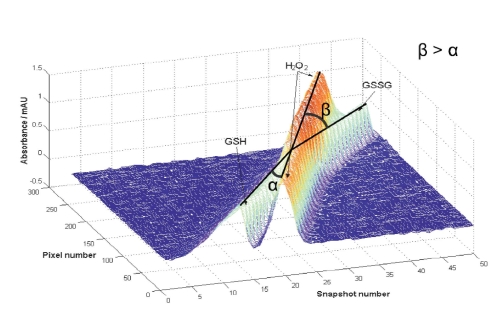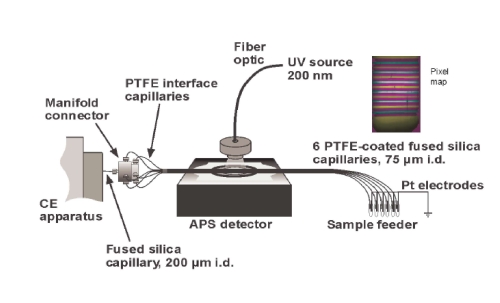Emeritus Professor David Goodall
07920 078433
E-mail: dmg1@york.ac.uk
Analytical science and instrumentation
As an Emeritus Professor, my current activities in the Department are principally via our spin-off company Paraytec Limited. Our most recent research in analytical science, carried out in partnership with Experimental Officer Dr Ed Bergström, has been focused on development and applications of novel miniature UV area imaging detectors based on active pixel sensor (APS) technology. Much of our work has exploited synergy with electronics engineers, biologists and major pharmaceutical and biopharmaceutical companies. APS devices are effectively cameras on chips, and our innovations allow them to be used in applications including
- Real time visualisation of separations and reactions
- Lab-on-capillary, visualising species before and after reaction and separation stages in capillary flow lines
- Lab-on-a-chip, with UV imaging of processes in flow channels
- Imaging dissolution of pharmaceutical dosage forms
- Enzyme assays and biocatalysis
- High precision ion analysis in pharmaceuticals and foods
- Simultaneous quantification and sizing of proteins and biopharmaceuticals
- Multiplexed detection in capillary electrophoresis (CE) and capillary liquid chromatography (LC)
- High sensitivity parallel detection of protein digest
Real time visualisation of in-capillary reactions
Oxidation of glutathione (GSH) by hydrogen peroxide. Note change in velocity of the analyte band on conversion of GSH to GSSG in travelling through the H2O2 zone. This is seen by the change in angle of the vector tracking for each peak the pixel number versus snapshot number. This work was carried out in collaboration with Maria Kulp, Tallinn University of Technology, Estonia.

Multiplexed detection in capillary electrophoresis
In work carried out by graduate student Pawel Urban, parallel studies of enzyme reactions and separations using nanolitre volumes are carried out in six capillaries. A manifold is used to link to a commercial CE apparatus and a single output capillary. In the pixel map of the image on the active pixel sensor detector (ActiPix D100, Paraytec Ltd), blue corresponds to light travelling through the sample in each capillary and yellow to light used to provide the signal reference.

Selected references
- Multi-compound electrophoretic assays for tyramine oxidase with a UV area detector imaging multiple windows on a looped capillary.
P L Urban, D M. Goodall, A Z Carvalho, E T Bergström, A Van Schepdael and N C Bruce, J Chromatogr A, 2008, http://dx.doi.org/10.1016/j.chroma.2008.06.003. - Electrophoretic method for assessment of substrate promiscuity of a heterogeneous biocatalyst using an area imaging ultraviolet detector.
P L Urban, E T Bergström, D M Goodall, S Narayanaswamy and N C Bruce, Analyst, 2007, 132, 979-982. - Visualization of electrophoretically mediated in-capillary reactions using a complementary metal oxide semiconductor-based absorbance detector.
M Kulp, P L Urban, M Kaljurand , E T Bergström and D M Goodall, Anal Chim Acta, 2006, 570, 1-7. - Real-time image acquisition for absorbance detection and quantification in thin-layer chromatography.
M Lancaster, D M Goodall, E T Bergström, S McCrossen and P Myers, Anal Chem, 2006, 78, 905-911.

